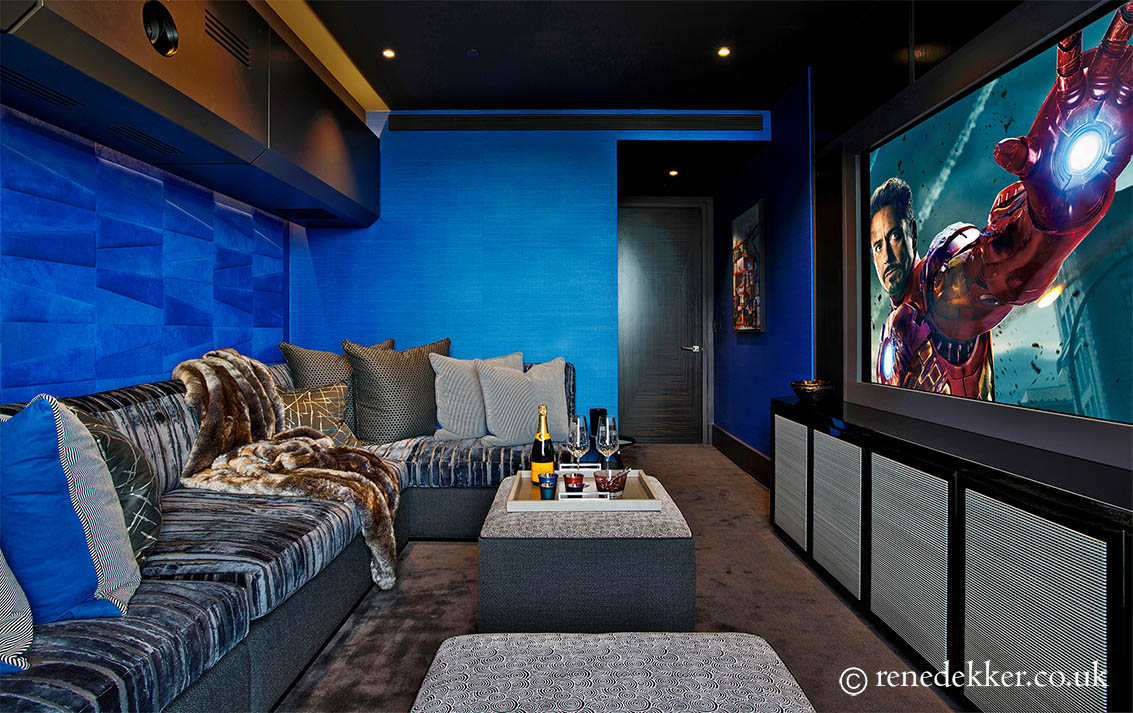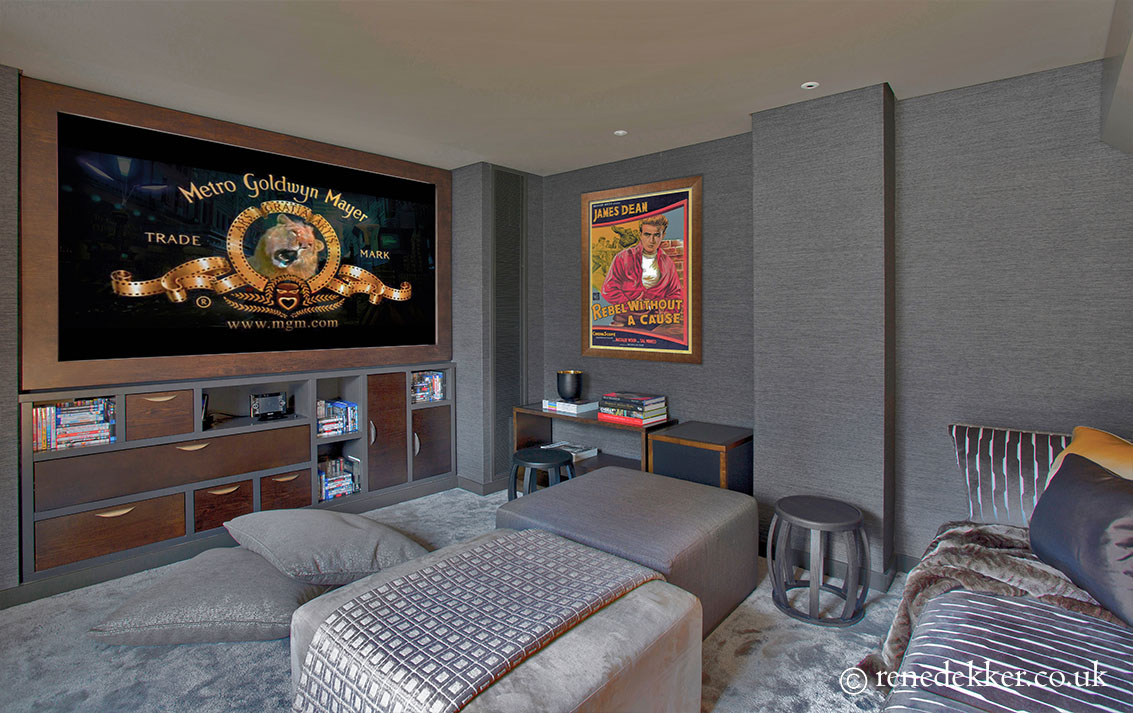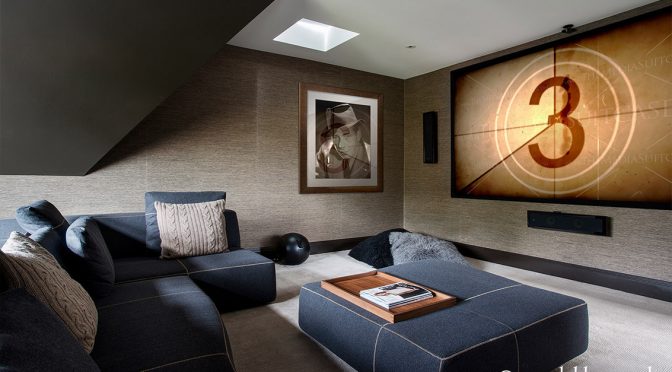Picture perfect
There's something magical about watching your favourite film up close and personal, and something fun about playing games and watching TV on a screen the same size as your average billboard. And the good news is there are systems to suit all budgets, lifestyles and room schemes. Ideally, you want luxury seating seats, razor-sharp images and jaw dropping, immersive surround sound topped with high end interior design. As Anthony Burgess once said: "It's funny how the colours of the real world only seem real when you watch them on a screen.” So whether you want a dedicated home theatre or a discrete hidden cinema system, here are the top 10 areas to consider — these are our first 5 Tips! Look out for blog post part II for the second instalment.
1 Starting out
To ensure you get the best possible experience from your cinema room, the key is to get everything right at the design stage. This means everything, from the basics of ensuring you have the right space to begin with, the best dimensions and correct lighting options, right down to having a sufficient amount of power points. Working alongside an architect, or more importantly, a top luxury interior designer will ensure you get the best acoustic and ergonomic design, which will make the difference between an average home cinema and one that takes your breath away.

2 Location
When choosing a room, be sure that vibration and sound isn't likely to annoy the neighbours. Also consider if the room is below a bedroom or has windows — as these can still carry sound outside. The room should be deep and not too wide and have most seats located in an area not much wider than the screen itself — a basement is often the preferred location for a luxury cinema room.
3 Seating
One of the best things about a home cinema is having the space to relax, with no chair back-kicking, hat wearing, constantly shifting, paper rustling members of the public to disturb your cinematic experience. To make things even more enjoyable, invest in decent seating — this could include tiers of luxurious electric recliners (these come in a variety of styles, finishes and shapes), bespoke options, moveable chairs, comfy sofas or even inviting loveseats.
4 Lighting
At the design stage, make sure the room has suitable lighting circuits and fittings – this will enhance the performance of the cinema as well as the room itself when it's not in technical use. Soft, discreet hidden feature lights, step lights, spot lights and anti-glare wall sconces can all help create the perfect lighting mood for relaxing to watch TV, settling down for a movie or even lighting a pathway to the bathroom during an intermission, all at a touch of a button on your remote control.

5 Screen
This is one of the most important pieces of equipment in your movie room, so best to choose wisely. There are two main areas to select from, the first is projector and screen that can fill a wall, and provide a life-like theatrical experience. The second option is the smaller flat panel TV screen, which can be large enough to offer the sharpest, brightest and most dazzling images. They are simple to mount, but screen sizes are limited, and some have a glossy surface that can reflect lights back in the room. Whatever you choose, essentially, the screen should be large enough so everyone in the room can back up and view it from a good angle. To achieve this, first know your screen size (measured on the diagonal). You should be able to sit back a distance of two to three times that measurement for optimum viewing, which is large enough to get that “wow” factor.
Continue reading to find steps 6 – 10 on Home Cinemas — Part II….
For more information please visit Rene Dekker Design at https://www.renedekker.co.uk or
contact us at [email protected].
